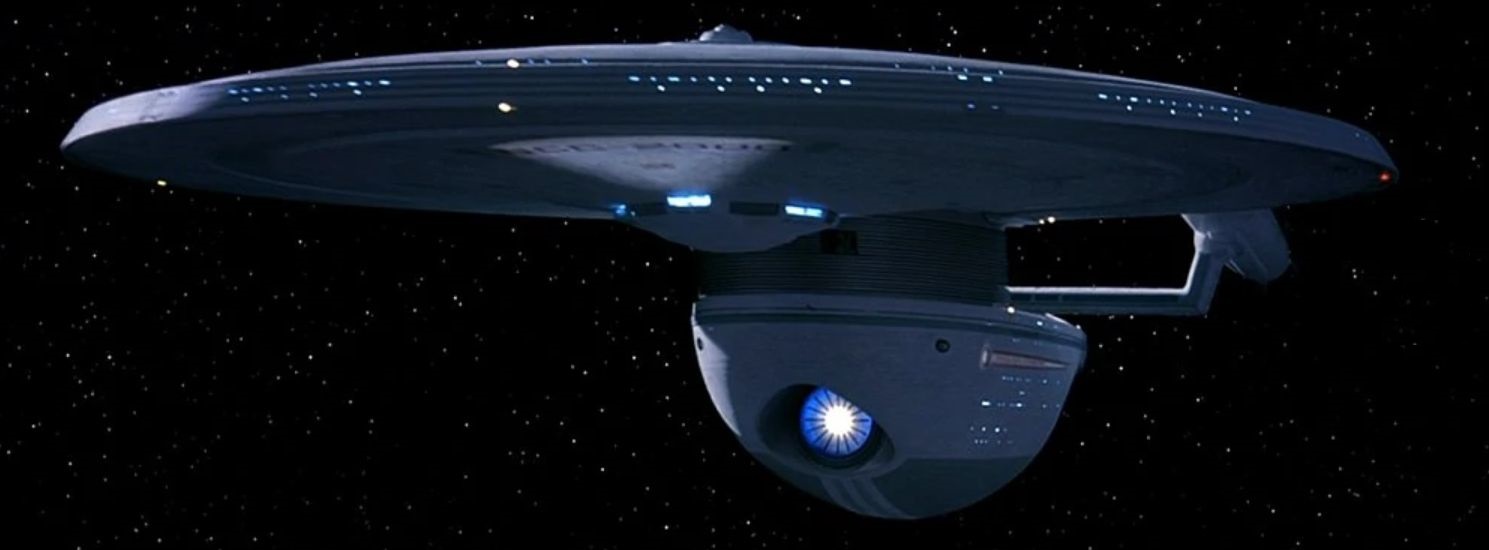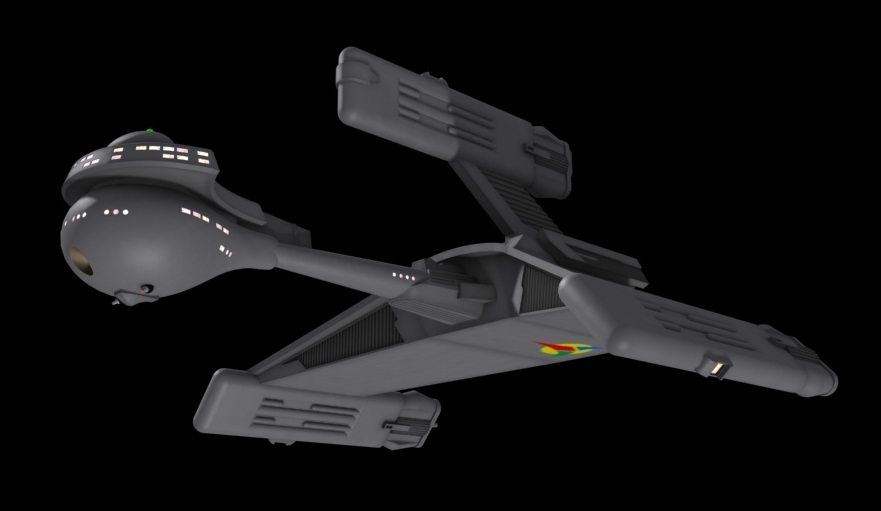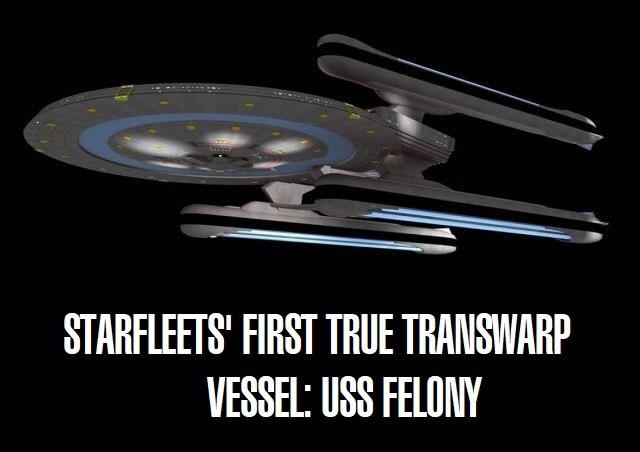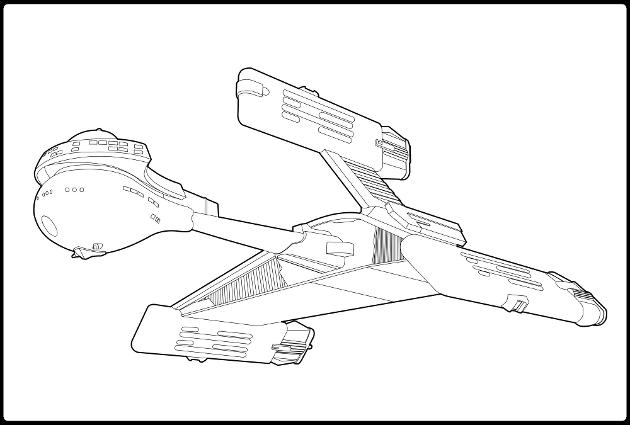WORK IN PROGRESS

THE USS EXCELSIOR AND TRANSWARP TECHNOLOGY
The USS Excelsior (NX-2000) was a very large and extremely specialized starship that was designed to be a new technology test bed for Starfleet Command, including transwarp drive and a new highly modified warp core. Designed under radically new principles of propulsion, this prototype starship had the potential for becoming the fastest starship in the entire Federation. Below is a condensed summary of this vessel:
Initial construction took place in Spacedock (in near-Earth orbit) where many of Starfleets' secret experimental starships were built. Construction was taken to the space frame stage only and then she was transferred to the Fleet Yards at L-5 (Earth) for modification and fitting out. There she was equipped with experimental lateral sensors, tractor beam emitters, impulse engines, hull skin layers and frame alloys, a heavily modified main deflector dish, a new intraship communications network, and an advanced computer core. The highly modified warp core and nacelle strust were also incorporated into the ship at this time. Being an experimental vessel, the USS Excelsior had prototype systems and weapons which were later used in building the much larger Galaxy-class starships.
Construction was completed under BuCon Admiral Morgan Rice's direct supervision (and utmost secrecy) and the USS Excelsior, after returning to Spacedock in 2285 AD and preparing for trial runs, was placed under the command of senior Starfleet Captain Edward Styles. During an incident with the USS Enterprise in Spacedock, "Drydock Styles" was unable to stop Captain James Kirk from stealing his former ship. Following this embarrassing failure, the Excelsior essentially spent the next year in spacedock. In 2286 she was briefly ordered to be launched during an apparent attack by an alien probe, but the Excelsior (as well as the spacedock) lost all internal power and was left stranded in her bay.
Unfortunately, while most of the Excelsior's non-propulsion systems where a success, the transwarp project itself proved to be over-ambitious. During one of seberal crippling events, it was only a deliberate act of sabotage by the Chief Engineer which prevented a catastrophic nacelle implosion on the first flight. Despite years of further work on the engines, the Excelsior was branded a failure - never made a successful test flight and never having broke the transwarp barrier. Starfleet abandoned the Excelsior transwarp project altogether in 2287 and refitted the ship with a standard warp drive.
This was not the end for Federation transwarp technology, however. Nearly a hundred years later (in 2372) the crew of the USS Voyager succeeded in conducting two brief shuttlecraft flights at warp 10 - actually straddling the warp barrier itself, and achieving infinite speed! However, several significant problems remain with this approach; Voyager crew members who conducted the flight experienced severe health problems, including dangerous genetic abnormalities. Voyager relayed some details of this flight back to Starfleet in 2373 via an alien subspace communications array. Experts analyzing the technology have indicated that the difficulties experienced by Voyager are in fact only the tip of the iceberg. As well as the guaranteed genetic damage, the subspace fields associated with this form of transwarp drive results in an 85% chance of fatality per flight. Significant problems also remain with navigating a vessel using this form of drive system, and as a result even unmanned probes have proved to be unusable.
Alien Technology
Although many regarded transwarp drive as an impossibility, recent experience has shown that transwarp is indeed possible. In 2364 the USS Enterprise-D made several short transwarp flights with the assistance of an alien being known as "The Traveller". In 2369 the Borg invaded Federation space for the third time, under the command of the android Lore. This time the Borg used a transwarp vessel capable of generating conduits within which an object could travel at incredible speeds - the USS Enterprise accessed one of these conduits and made a short trip at an average of some 236,000,000 times light speed. This vessel, which is thought to have been an advanced prototype, was later destroyed by the Enterprise.
The crew of the USS Voyager, who had tested their own transwarp drive in 23722, encountered a transwarp-capable species known as the Voth while journeying in the Delta Quadrant. A typical Voth ship was capable of very high speeds using their transwarp drives.
The USS Voyager has subsequently encountered the Borg, and has confirmed that a form of transwarp utilizing conduits is in widespread use by this species. The Borg maintain six transwarp hubs, each of which maintains a network of many conduits spreading throughout the galaxy. Vessels entering this network can cross the galaxy in a matter of minutes at speeds in equivalent to more than a billion times that of light. In 2377 Voyager managed to destroy one of these hubs, disabling Borg activity across a huge section of the galaxy. Borg vessels also use transwarp coils to generate conduits.
Federation Results (Finally)
More here soon.....USS Felony
MORE HERE SOON

BALTOC-CLASS
This class of warship was the final culmination of the failure of the Klingon Empire to perfect the transwarp drive, and the conclusion of a successful spying program against the United Federation of Planets. For more than fifty years the Federation and Klingons have been in a joint alliance, but its main focus was not on military issues but rather economic and social ones. To this end, Starfleet Command kept its defense programs top secret and shared very little with their Klingon counterparts, and that prevented the sharing of transwarp drive technology. UFP scientists had been working on the high-level warp drive for more than a century but it had little to show for it, and the Klingons too had been working on a similar warp speed project, again with poor success. Eventually the Federation made a breakthrough in this area with the Velocity Project, which the Klingons promptly stole from them. The Talon'n-class experimental cruiser is the end result, and towards the end of the Resolute War it was first field tested, deep within the Klingon Empire. The primary goal of transwarp was the ability to transit from impulse drive to high warp speeds within seconds (stand war drive ships often took several minutes to get up to that level). Another important facet of transwarp was.....MORE HERE SOON
Initial Transwarp Success
The House of Kornak was able to test its newly built transwarp drive successfully on the IKS _______. Previous attempts to break this warp speed barrier had failed in the past (LINK HERE) but the Talon'n transwarp drive tests were eventually a triumph, working exactly as expected and at the correct power levels, all without any negative side effects. The vessel was field-tested for several months before new transwarp drives were installed aboard the first D'korin-class battleships. These new speeds enabled Klingon military forces to move about rapidly on the battlefield and to rush reinforcements to any area needed, crushing local defenders. Sadly, this speed superiority enabled the Klingons to bring about a rapid conclusion to the Resolute War, including the destruction of the Romulan homeworld. In addition, during the Dominion War, a dozen Talon'n-class ships were built and used in that theater of operations (very successfully) against enemy forces and more than 120 D'korin-class battleships were constructed during that conflict. MORE HERE SOON

